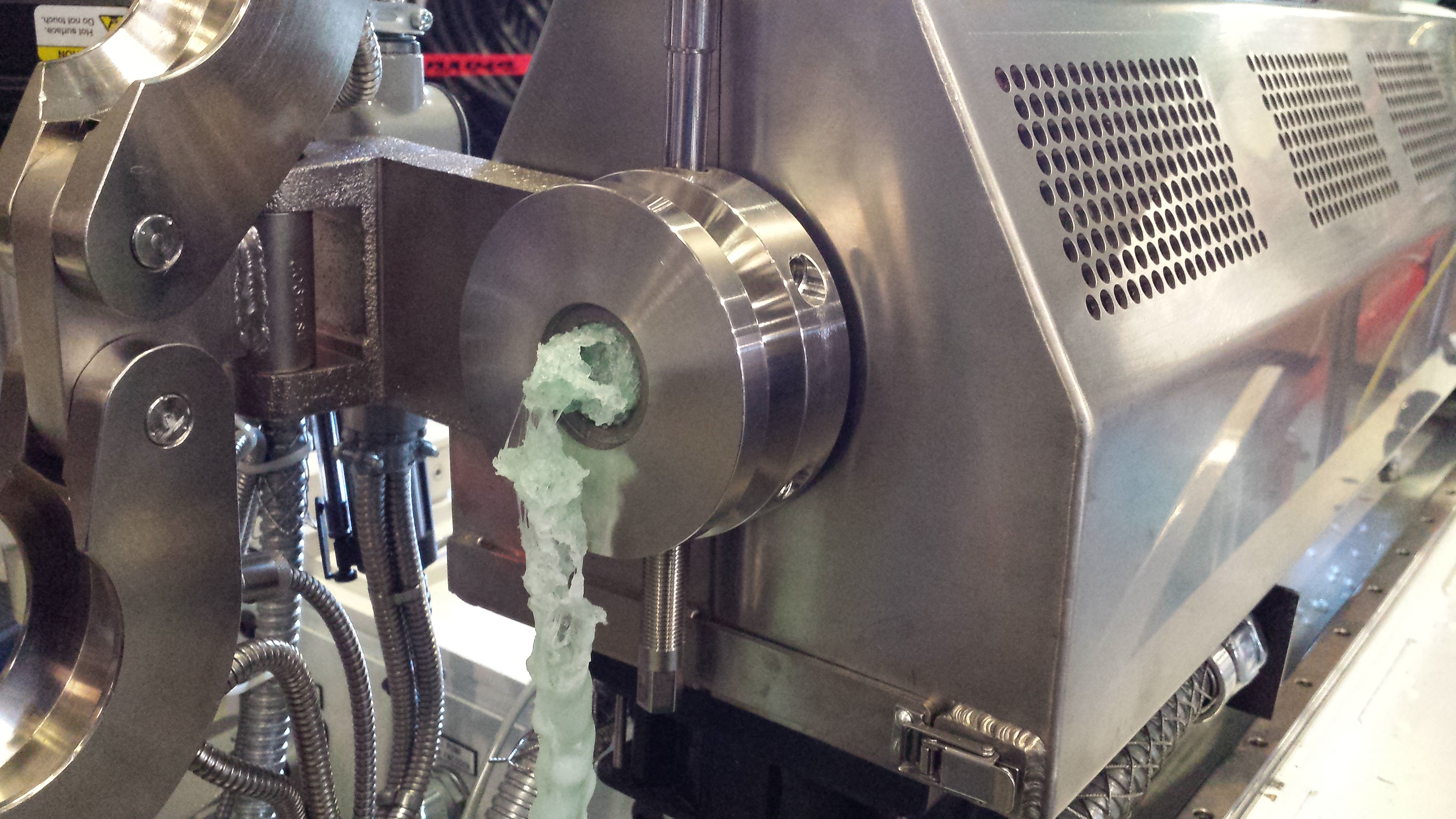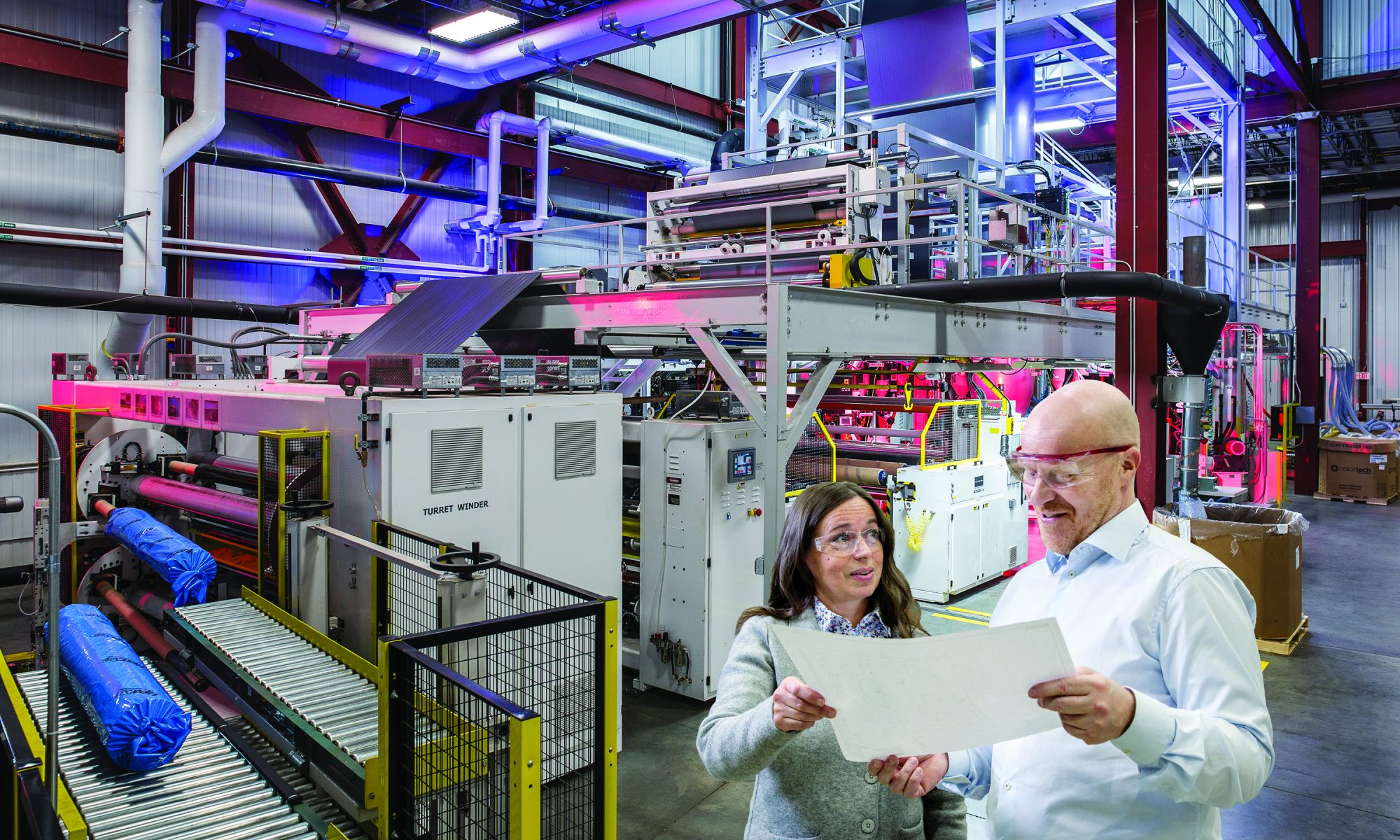
In Purging – Part III of our Feedscrew and Barrel Maintenance blog series, we will focus on a two-step purging process for scheduled equipment maintenance and disassembly. This includes a high-viscosity resin purge followed by a cast acrylic purge. The high-viscosity resin scours the flow surfaces of the extruder, adapter and die system and is done with the downstream components assembled. Once the high-viscosity resin purge is complete, a cast acrylic compound is then processed through the extruder after the downstream components are removed in an open discharge configuration. This cleans the screw and barrel and removes any remaining material from the extruder. And voila! You have a clean system.
Note: These procedures should only be conducted by trained personnel. Please consult your equipment operating manuals for considerations regarding your specific system. This may include adjustments in temperature and time based on materials, and the size and design of your equipment.
High-Viscosity Purge Procedure (First step)
For this procedure, a high-viscosity HDPE is used. This is an excellent cleaning agent, easily releasing from the flow surfaces of the adapter and die after disassembly of downstream components.
1. Run material out of the extruder.
2. Back out the variable depth thermocouples.
3. Set the barrel profile temperatures to 280°F.
4. Add HDPE to the hopper.
5. Purging should be done at 25 to 40 percent of normal run speed.
6. Watch head pressure as barrels drop.
7. When the material runs out of extruder (amps start dropping), shut off the extruder and follow the second step for the cast acrylic purge.
Cast Acrylic Purge Procedure (Second step)
Care must be taken before processing the cast acrylic. The cast acrylic will not flow through a breaker plate, adapter or die. The breaker plate, adapter and downstream equipment must be removed. Also, ensure there is adequate ventilation before performing this step.
WARNING: When working around the discharge end of the barrel with the downstream components removed, wear appropriate PPE (i.e. face shield, high-temperature resistance clothing and gloves). Hot polymer may splatter during the process and could result in serious burns to exposed or inadequately protected body parts.
1. Set the barrel profile to 350 degrees F.
2. Remove the downstream components from the system.
WARNING: Once the downstream equipment has been removed, there is exposure to a rotating screw. Do not put finger/hands or any tools near the barrel discharge as serious injury may result.
3. Starve-feed the cast acrylic compound slowly to the extruder (1-1/2 five-gallon buckets should be sufficient).
4. Watch the amps closely as the acrylic compound will easily amp-out the extruder.
5. Start purging the extruder at 5 RPM. Do not go above 20 RPM.
6. When the acrylic exits in a powdery form, the purge is complete. Let the acrylic run out entirely before extracting the screw.
7. Push out the screw and place on a cart. Remove excess material with copper gauze.
8. Clean the barrel with a wire brush and copper gauze.
Do you have comments or like the information in this blog? Please comment below or share on social media! Don’t forget to tag Davis-Standard!
As always, you can email us too if you need service, have questions, or need help purging. E-mail marketing at marketing@davis-standard.com.
Cheers,
The D-S Connect Blog Team

Would you have a recommended HDPE resin for purging?
Could you also confirm the 280F barrel temperature setting for the HDPE purge?
Good morning: My apologies for the delay. We do not have a particular HDPE grade to recommend. However, generally speaking, we recommend “fractional MI” HDPE resins without color or other additives (except antioxidant package).
For the second question, 280 degrees Fahrenheit is OK for purging with LLDPE and LDPE but is low for purge with HDPE. We recommend purge with HDPE at 325 degrees Fahrenheit.
Hello,
Would this purge process work for PEEK (Polyetheretherketone).
If not do you have any recommendations for purging out PEEK (Polyetheretherketone).?
Good afternoon: our sincere apologies for the delay. This is not a good purge procedure for PEEK. A more sophisticated method is required due to the high processing temperature of PEEK. We will have recommendations for you by the end of the week. Thank you kindly for your patience.
Good morning Mr. Galindo:
We sincerely apologies for the delayed response. Please see below and let us know if you have additional questions.
A few companies make a “high temp” purge resin (not sure if you want to advertise but Dynapurge is one of them, Asaclean another). I don’t have positive personal experience with either of these companies. The customer would have to contact them directly
– Alternatively, if the barrel/screw/die is also corrosion-resistant, FEP (unfilled grades like FEP100 or NP120) could be used simply to remove the bulk of the PEEK, then reduce temperatures into the low-mid 600F (PEEK is generally low to mid 700F). FEP generally has no affinity for metal and comes off metal parts easily. I caution to purge quickly as FEP can/will degrade, but that’s a time/temperature phenomenon.
Even with the above purge procedures, I generally notice a “skin” of PEEK particularly on non-wiped surfaces (e.g. inside adapters, on-die mandrels, tooling, etc). The barrel is usually OK however the screw may also have this skin. To clean this we use a media blasting cabinet. Some of the “high temp” purge resins mentioned above contain abrasive fillers designed to remove this film but I’ve never had much luck with these, it seems they usually result in a mess more difficult to clean than the PEEK itself.
FEP is not a preferred method since:
-it requires corrosion-resistant MOC (materials of construction) which isn’t always the case with a “high temp” machine.
– it’s rather expensive, about ~ $30/lb, which is probably less expensive than PEEK but much more expensive than the “high temp” purge resins
After the high temp resin is out of the system and the barrel profile down to reasonable ranges (say less than 450F), the customer could continue with the procedure John outlined (HDPE with cast acrylic). Note that we generally don’t use that procedure with the small extruders, which also tend to be the size of extruders people run PEEK on.